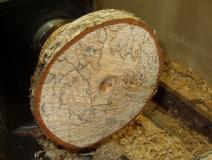
Wood Turning the End Grain, Natural Edged Bowl
Page 2 - Inside to the finish
"Naturally designed to give you the edge."
Having turned the outside, it is time to turn the inside.
| The inside of the bowl is turned away. Even though I use a hook tool for the task, there are few shavings due to the nature of the spalting of this wood. |
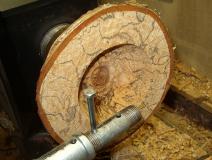
|
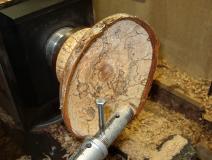
|
|
| The bowl is ready to be sanded but the spalting determines another difficulty to be overcome. The surface is rough and will be hard to sand because of tear out. |
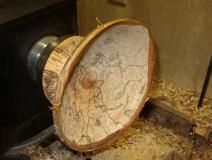
|
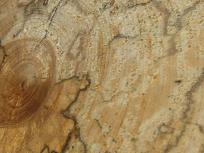
|
|
| I coat the inside and outside with paste wax to ease the sanding. I have no idea why this helps but I know that the wax will speed up the first sanding immensely. The wax I am using is a blend of 2 parts mineral oil, to 2 parts vegetable oil to 1 part bee's wax. In this case I will start with 60 grit and proceed all the way to 2000. |
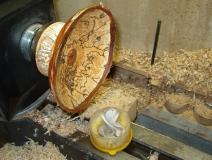
|
| The bowl is sanded and ready for the finish. |
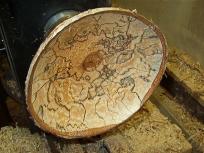
|
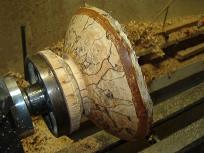
|
|
| A good finish demands a good surface. |
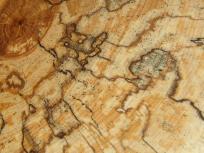
|
| I have been using double boiled linseed oil lately for a finish and really like it for yellow birch. |
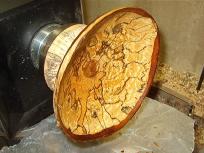
|
| Then the parting tool is used to cut away the tenon and the bowl is cut away from the lathe with a saw. The bottom will be sanded later, after the oil is dry. |
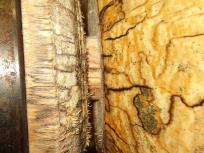
|
| The finished bowl, about 7 1/2" x 2" |
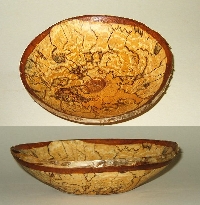
|
| Another one in yellow birch but unspalted; about 7"x3" |
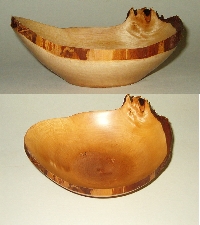
|
| One in ash about 5"x3" |
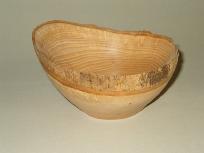
|
| And a footed bowl in yellow birch, about 7"x5". |
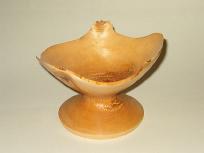
|


If you make one please let me know how it turned out.
© 2015 copyright Darrell Feltmate, Around the Woods
